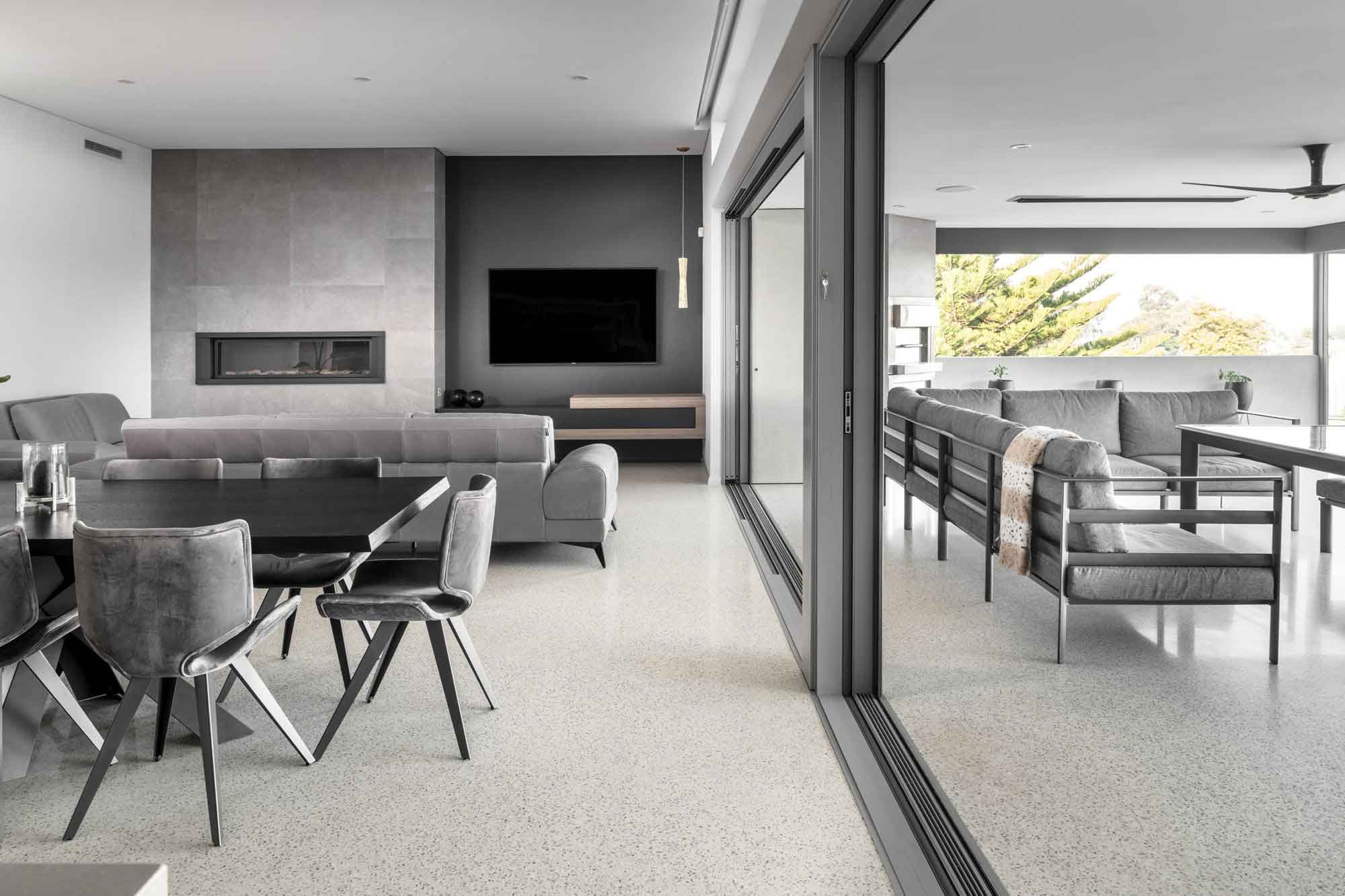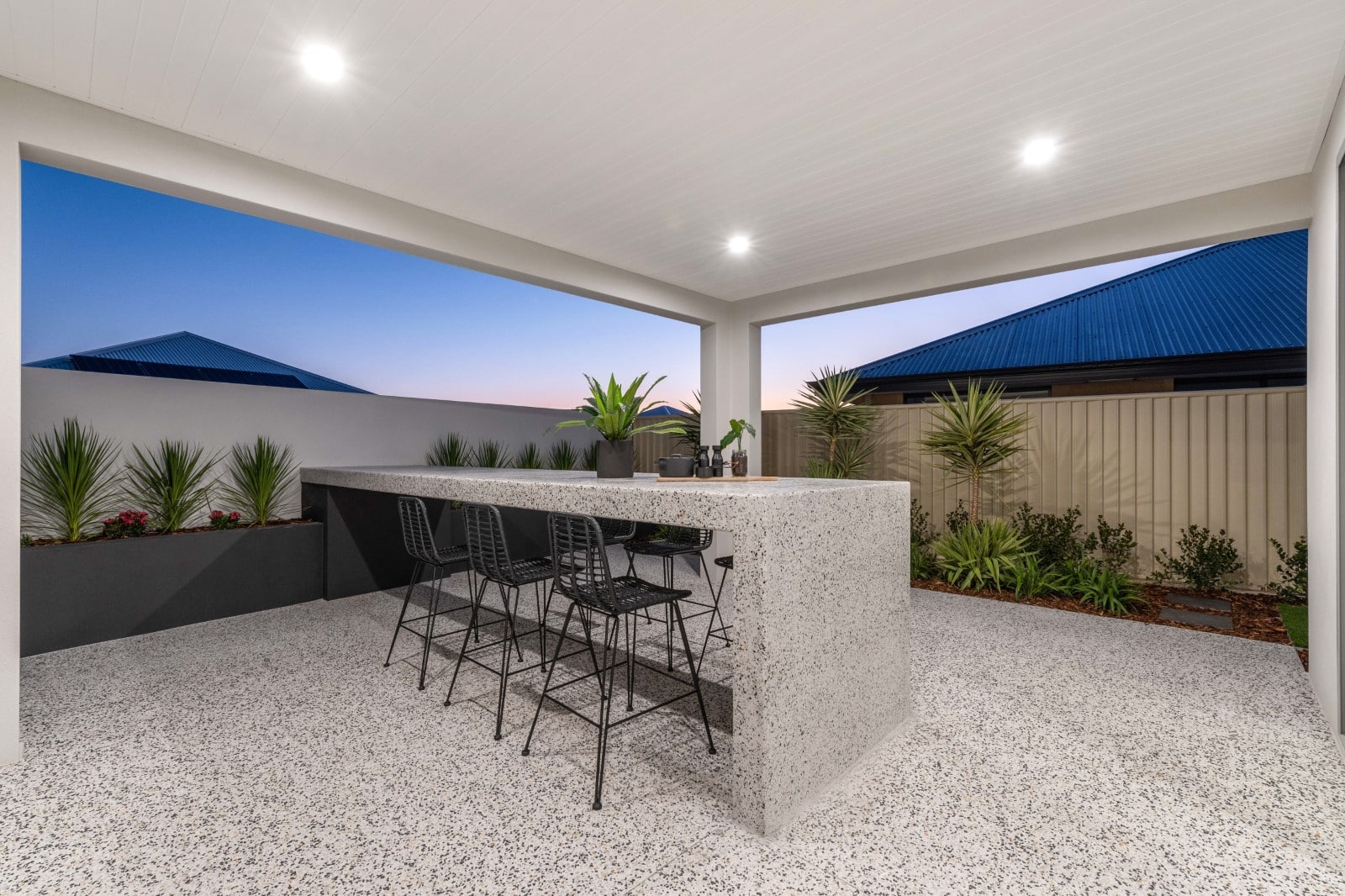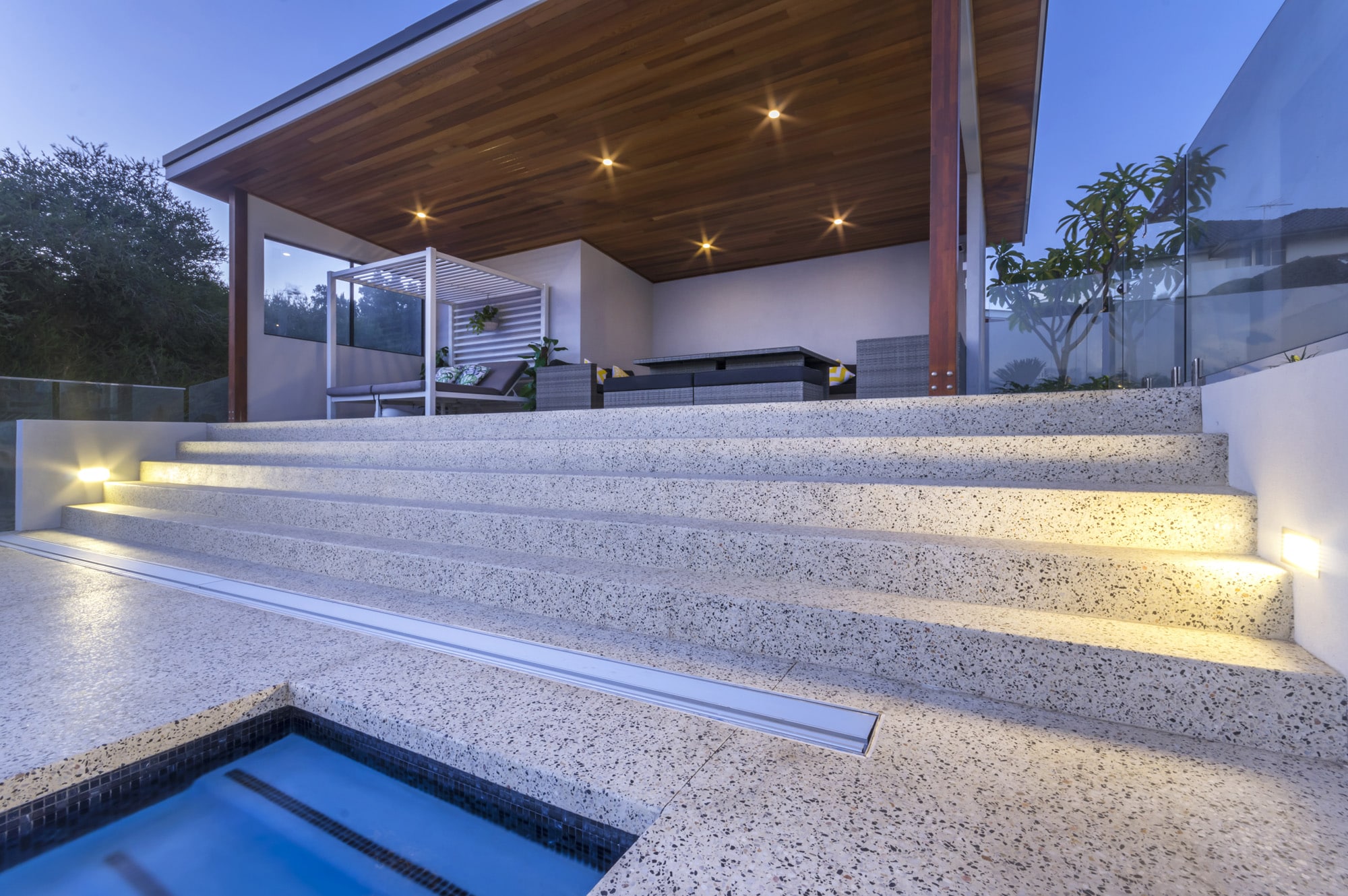Concrete is the foundation of the global construction industry and the sustainability of its production is a pressing issue.
At Limecrete, we are committed to innovation and staying up to date with industry advancements. While not all of these concrete technologies are a part of our service offering, we understand the importance of looking toward the future and reducing impacts to the environment where we can. We wanted to share these exciting developments as we believe the potential for real change is present within our industry moving forward.
What is Concrete?
To understand the environmental impact of concrete, we first need to understand what it is and the process of its production. Concrete is a mixture of sand, stones, water and cement – it is a liquid that can be poured in a multitude of shapes and once dry, turns into a rock-like material.
Cement is the key ingredient that makes concrete such a useful building material. Over four billion tonnes of cement is used globally every year, concrete is the most widely used, manufactured material worldwide and it has shaped a majority of the modern-day built environment?
The manufacturing process of cement requires the use of long rotating kilns, heated to 1500°C. Chemical processes turning the raw materials of clay and limestone into cement.
A Brief History of Concrete
Concrete is often thought of as a modern material but there is evidence that is has been utilised for thousands of years. The Romans used a type of volcanic ash to create concrete from about 300BC, with the roof of the Pantheon still the largest unreinforced concrete dome in the world. The Romans used concrete across Europe until the fall of the Roman Empire in the fifth century.
After this period, concrete was not utilised for over a thousand years until the 1750s when a British civil engineer named John Smeaton was commissioned to construct a lighthouse off the coast of Cornwall in England.
Portland Cement, patented in 1824, set the foundation for the production of modern concrete. It was utilised in the foundations of the new Palace of Westminster in 1840 and since then has been used in vast quantities in the global construction industry.
When set, concrete has high compressive strength and relatively low tensile strength. This means that it is extremely resistant to squashing, but not very resistant to being bent. These properties led engineers to favour concrete for applications such as the foundations of buildings.
To increase the tensile strength of the material, iron or steel was introduced as a method of bolstering the concrete – and reinforced concrete as we know it today was introduced. It was a composite structure that changed the face of the planet, and the ‘Backbone of Modern Construction’ was born.
Concrete Technology Advancements
Fast forward to present day and there are many innovations within the construction industry, shaping the way it operates. Advanced concrete technology refers to using innovation to improve the performance, durability and sustainability of concrete in building and construction applications. It involves incorporating cutting-edge research, engineering and manufacturing methods to develop concrete with superior properties to the traditional material, in regard to strength, durability and sustainability.
High-Performance Concrete
High performance concrete (HPC) is a type of concrete that is formulated specifically to achieve greater strength and durability. HPC is made by utilising carefully selected materials and optimising the proportions of the mix to reduce the water-cement ratio, resulting in a denser and more durable product.
The use of HPC products in construction projects results in structures that can withstand higher loads, have an extended service life and improved resistance to cracking, corrosion and deterioration. HPC is an ideal choice for large scale infrastructure projects including bridges, highways and high-rise buildings – projects where durability and performance are paramount.
Self-Healing Concrete
Self-healing concrete is a revolutionary advancement within the concrete industry. This material has the ability to mend cracks and alternative forms of damage without the need for costly and time-consuming repairs. Self-healing concrete functions by incorporating special additives such as encapsulated bacteria or healing agents into the concrete mix.
In the occurrence of cracking, the healing agents within the concrete are activated by water, filling the cracks and effectively sealing them, preventing further damage. This technological advancement has the potential to significantly extend the service life of concrete structures, reduce maintenance costs and ease environmental impacts.
Smart Concrete
Smart concrete is another interesting industry development, as it has the capability to monitor its own health and provide real-time data on the condition of the concrete. By incorporating sensors or conductive materials embedded within the concrete mix, changes in temperature, strain or other parameters can be detected.
A central monitoring system can be utilised for detection of potential issues, while enabling proactive maintenance and repair measures to be taken prior to the damage becoming severe. This technology can assist in extending the service life of concrete structures and reduce risks associated with sudden failure or collapse.
Nano-Engineered Concrete
Nano-engineered concrete makes use of cutting-edge technology to modify the properties of concrete at a molecular level. The nanoparticles utilised can improve the mechanical, chemical and thermal properties of concrete – aiding in enhancing strength, durability and environmental friendliness.
A few key applications of nano-engineered concrete including self-cleaning concrete and concrete of higher density. Self-cleaning concrete can break down pollutants and clean its surface when exposed to sunlight, reducing the need for maintenance and cleaning of structures in urban areas. The addition of nanoparticles can enhance the bond between cement elements, creating a denser and more durable material – increasing compressive and tensile strength of the concrete.

The Development of Eco-Friendly Concrete: Domestically & Abroad
Concrete is the foundation of the $10 trillion global construction industry, but it is also the biggest source of construction-related carbon emissions, contributing approximately 8% of global greenhouse gases. Researchers worldwide are working to come up with solutions that mitigate concrete’s impact on the environment – and they say that Governments need to lead by embracing the new generation of ‘green concrete’.
Development of Eco-Friendly Concrete Products in Australia
A team from Sydney University’s Waste Transformation Research Hub headed by Professor Ali Abbas, have created a carbon-capturing concrete pavement constructed with recycled waste – that is set to be trialled with some Sydney councils.
Dr Ezgi Kaya, a structural engineer with development consultancy Hatch who work to identify projects where green concrete can be utilised, shares a common vision with Professor Abbas regarding eco-concrete as the future. The production of cement is linked to extreme levels of CO2 release in the concrete industry and Dr Kaya believes if materials used in concrete can be replaced by recycled materials, the result is a far more environmentally friendly product.
“Unlike conventional concrete, which requires a considerable amount of energy and resources to produce, green concrete often uses recycled materials and minimises the use of general-purpose cement, a major contributor to carbon emissions”, Dr Kaya said.
Replacements for cement can include ash from coal power stations (which Australia has plenty of) and recycled glass. Recycled glass can be used in place of sand, which reduces the need to extract sand from rivers, causing environmental degradation. Experiments are being conducted by researchers to examine the possibility of adding carbon to concrete mixes in a process known as concrete carbon capture.
In late 2020, Professor Abbas and his team created a cement pavement that incorporated concrete carbon capture. The pavement was manufactured from coal ash, recycled glass and gaseous carbon dioxide, and was trialled on the Sydney University campus. In an interview with Government News, he disclosed that a new trial was underway with a group of councils and that an eco-concrete pavement was to be installed in a Sydney Local Government Area.
“We installed the first trial pavement two and a half years ago. It is standing very nicely, very strong, no cracks – a really good, strong performance. Even the look of it is much more appealing than normal pavement”, Professor Abbas said. “We learnt a lot from those trials… the blend we have innovated is actually quite well suited for these horizontal infrastructures such as pavements, roadways and cycleways.”
Commercialisation of the eco-concrete pavement is being discussed and it’s hoped the product will be available on the market within twelve months. Professor Abbas and Sydney University have received grants to explore the capture of carbon from gaseous waste streams to lock it into concrete products.
International Sustainable Concrete Developments
A research team from Washington State University (WSU) in the United States have successfully developed a carbon-negative, eco-friendly concrete formula that is comparable in terms of strength with traditional concrete. This was achieved by infusing standard cement with biochar – a charcoal produced from organic waste – which had been previously fortified with concrete wastewater. The biochar was recorded absorbing up to 23% of its weight in CO2 from the atmosphere.
This research, led by doctoral student Zhipeng Li, has the potential to significantly reduce carbon emissions within the concrete industry. The research was reported on April 10, 2023, in the scientific journal Material Letters.
“We’re very excited that this will contribute to the mission of zero-carbon built environment” said Xianming Shi, professor in the WSU Department of Civil and Environmental Engineering and corresponding author on the paper.
More than 4 billion tonnes of concrete are produced around the world annually. The production process for ordinary cement requires high temperatures, the combustion of fuels and the decomposition of limestone, which produces CO2. Researchers have tried adding biochar as a substitute in cement to reduce its carbon footprint – however adding approximately 3% biochar to the mix reduced the strength of concrete drastically.
After treating biochar in concrete wastewater, the research team at WSU were able to add up to 30% biochar to their cement mixture. The biochar-cement mix was able to reach a compressive strength comparable to that of ordinary cement after a period of 28 days. “We’re committed to finding novel ways to divert waste streams to beneficial uses in concrete… the trick is really in the interfacial engineering – how you engineer the interfaces in the concrete” said Professor Shi.

The Future of Concrete: 3D Concrete Printing
Researchers at the University of Michigan’s DART Lab have made a major breakthrough in the field of 3D concrete printing (3DCP) – paving the way for a more sustainable and cost-effective future in construction. The research team have developed a method to create ultra-lightweight, waste-free concrete, which reduces the weight by up to 72% compared to conventional, solid concrete of the same size.
Traditional 3DCP approaches aim to digitise construction and reduce the consumption of concrete, however these methods have geometric limitations. The new development, known as “Shell Wall,” demonstrates a computer design and robotic 3D printing technology that combines topology optimisation with 3D concrete printing.
Topology optimisation is a technique that generates efficient distributions of material based on performance criteria, such as weight or strength, for a given set of support. Creating a computer model to synergise nonplanar and variable material deposition based on the shape and geometric features of the optimised parts – the team developed a method that allows for the efficient use of material by placing it exactly where it is required for structural purposes.
This new approach eliminates unnecessary overbuilding with excessive amounts of materials, enabling construction of more environmentally friendly structures at a lower cost. In 2023, as artificial intelligence, automation and robots in architecture continue to advance, 3D printing is gaining popularity. This is due to its ability to quickly create complex structures with reduced waste.
With rapid urbanisation and increased demands to build infrastructure, the development from the DART Lab research team contributes to significant change in the construction industry and 3DCP. This breakthrough also aligns with growing trends around eco-friendly materials and 3D printing across industries.
Limecrete and Concrete Advancements
At Limecrete, we are dedicated to producing the finest in decorative concrete for the Perth region. Sourcing our aggregate products from the best quarries in Australia and adopting the most advanced technologies in the industry – we create stylish, trendy mixes that are perfectly suited to the homes of Perth.
Since opening in 2006, we have developed a solid rapport with the premier builders, architects and tradesmen within the industry. These relationships provide us with insights and knowledge to continuously refine our products, ensuring we delivery truly unique concrete mixes that homeowners are looking for.
Limecrete is Perth’s only concrete supplier specialising in creating decorative concrete products within our own facility. Our extensive industry experience and resources enable us to provide you with decorative products with unparalleled consistency. Whether you’re looking at an internal concrete floor or chasing a liquid limestone surround for your swimming pool – the specialist team at Limecrete can assist you with all your decorative concrete needs!



